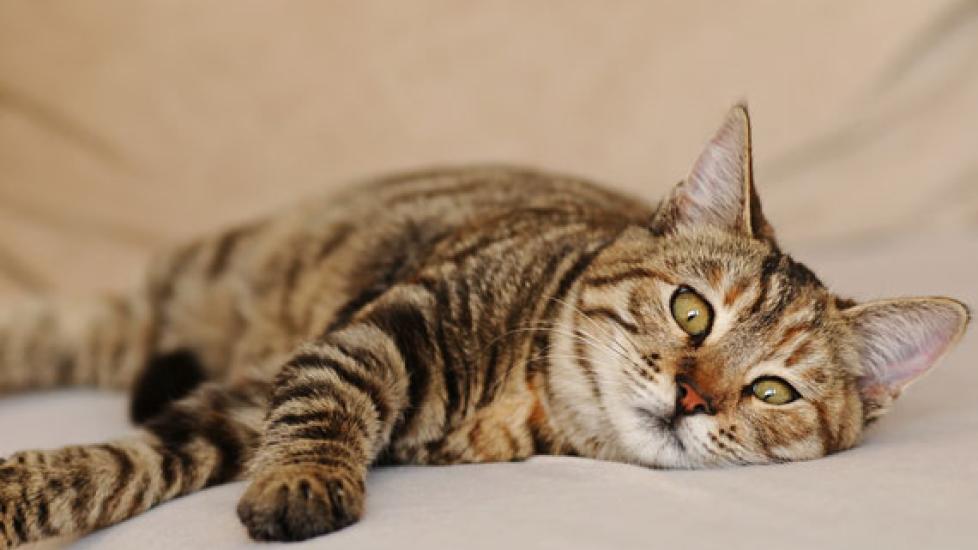Acid Reflux in Cats
Gastroesophageal Reflux in Cats
The uncontrollable reverse flow of gastric or intestinal fluids into the tube connecting the throat and the stomach (esophagus) is medically referred to as gastroesophageal reflux. This may be due to a brief relaxation of the muscular opening at the base of the esophagus (referred to as the sphincter), as well as chronic vomiting. Gastroesophageal reflux is fairly common in cats, and may occur at any age, although younger cats are at greater risk.
Gastric stomach acids, pepsin, bile salts, and other components of the gastrointestinal juices cause damage to the protective mucus lining the esophagus. This can result in inflammation of the esophagus (esophagitis).
Symptoms and Types
Gastroesophageal reflux can cause esophagitis with varying amounts of damage. Mild esophagitis is limited to a mild inflammation of the esophageal lining, while more severe ulcerative esophagitis causes damage to the deeper layers of the esophagus.
Your cat's behavioral history can reveal symptoms such as spitting up (regurgitation) of food, evidence of pain (mewling or howling, for example) while swallowing, lack of appetite, and weight loss. A physical exam will often not reveal any concrete findings. Severe esophagitis may include symptoms of fever and extreme salivation.
Causes
Gastroesophageal reflux may occur when an anesthetic is administered, causing the opening between the stomach and the esophagus (gastroesophageal sphincter) to relax. Improper positioning of the patient during anesthesia, as well as a failure to fast the animal properly prior to anesthesia can also result in gastroesophageal reflux.
An associated condition is congenital hiatal hernia, which is suspected of heightening the risk for gastroesophageal reflux. Young cats are at greater risk of developing this condition as well because their gastroesophageal sphincters are still developing. Long-term or chronic vomiting is another risk factor.
Diagnosis
The best means of diagnosis is generally an esophagoscopy, an examination which uses an internal camera to view the lining of the esophagus. This is the most effective way to determine if changes in the mucus of the esophagus are consistent with esophagitis due to gastroesophageal reflux. The examination may also reveal an irregular surface in the mucus lining, or active bleeding in the esophagus.
Alternative diagnoses include ingestion of a caustic agent, a foreign body or tumor in the esophagus, a hernia in the upper portion of the stomach (hiatal hernia), or disease of the throat or mouth.
Treatment
Most treatment will be done at home. Your veterinarian may advise you to withhold food for one to two days, thereafter following a dietary regimen of low-fat, low-protein meals given in small, frequent feedings. Dietary fat and protein should be limited, as fat decreases the strength of the muscle between the stomach and esophagus, while protein stimulates the secretion of gastric acid.
Medications are an additional option. Drugs known as gastrointestinal pro-kinetic agents improve the movement of stomach contents through the intestines and also strengthen the gastroesophageal sphincter. Regardless of whether medications are given, a change in diet is advisable.
Do NOT provide your cat Bismuth subsalicylate (Pepto-Bismol). It is considered unsafe for use in cats due to a cat's sensitivity to salicylates.
Living and Management
After initial treatment and alteration of diet, it is advisable to continue monitoring for gastroesophageal reflux. Watch for signs of discomfort. A continued low-fat, low-protein diet will prevent future incidences, and high-fat foods should be avoided, as they may worsen gastroesophageal reflux.
If your cat does not respond to initial medical treatments, a follow-up esophagoscopy may be advised.
Prevention
High-fat foods can worsen acid reflux. The best prevention is a healthy diet that is low in fatty foods.
